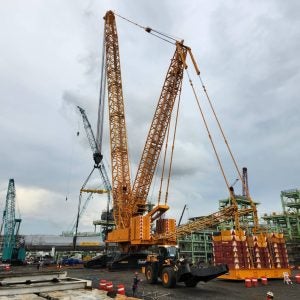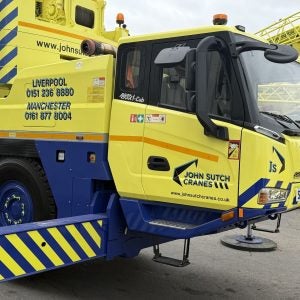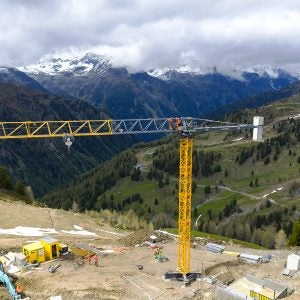A good example of this is the telecrawler. In the time I've been here, it's gone from a niche, marginal, product, to one that is carving out a substantial position in the market.
It's a crane type that Hans-Dieter Willim, interviewed in this issue by Stuart Anderson, describes as one of his personal favourite crane types. Willim's account of Liebherr's entry into this sector demonstrates another particularly interesting aspect of this sector: the way manufacturers respond directly to requests from individual customers for specific new capabilities.
Willim has worked for Liebherr's Ehingen mobile crane plant for forty years, rising to become its head of design. In that time, he's had a hand in developing key innovations, including some of the first all terrain cranes. In his time in the industry, he's seen it transform, as crane manufacturing becomes internationalised and rental, rather than user ownership, becomes the dominant model for most mobile cranes. In my headline for Stuart's piece, I referred to him as 'designing the crane industry'. That hasn't been a single-handed task, either within Liebherr or across the wider industry. But it is fascinating how a relatively small number of top design engineers have shaped this global sector.
But it's not purely individual genius or collaboration within manufacturers or with customers that breeds innnovation. It also depends on wider technological development. Willim cites one example in his interview, the growth since the 2000s of 3D design software. Without tools like this, it wouldn't be possible to design roadable 1,000t+ cranes, which require centimetre and tighter precision in order to hit target axle weights.
Another innovation that has shaped the modern mobile crane industry is the development of high strength steels, and the pressing and welding techniques that allow 4mm plates to be turned into strong, long, boom sections.
I look at this development in my article this month, on Manitowoc's recent launch of a series of L-designated long boom cranes. While the US manufacturer shaped its marketing at Bauma around the choice of standard and long booms, it's by no means the only all terrain manufacturer to be able to offer customers a choice between long reach and up-close lifting power. All of the key global all terrain manufacturers, benefitting from individual design genius, collaboration with customers, and modern manufacturing and design techniques, have worked to offer cranes to suit a wide range of requirements.






